Abstract
The presence of lactational amenorrhoea cannot be fully relied upon to protect the individual mother against becoming pregnant. Nevertheless, the use of breast-feeding as a birth-spacing mechanism has important implications for global health policy. This article identifies the information that should be collected and examined as a basis for developing guidelines on how to reduce the dual protection afforded by postpartum lactational amenorrhoea and other family planning methods, and discusses when such methods should be introduced.
Full text
PDF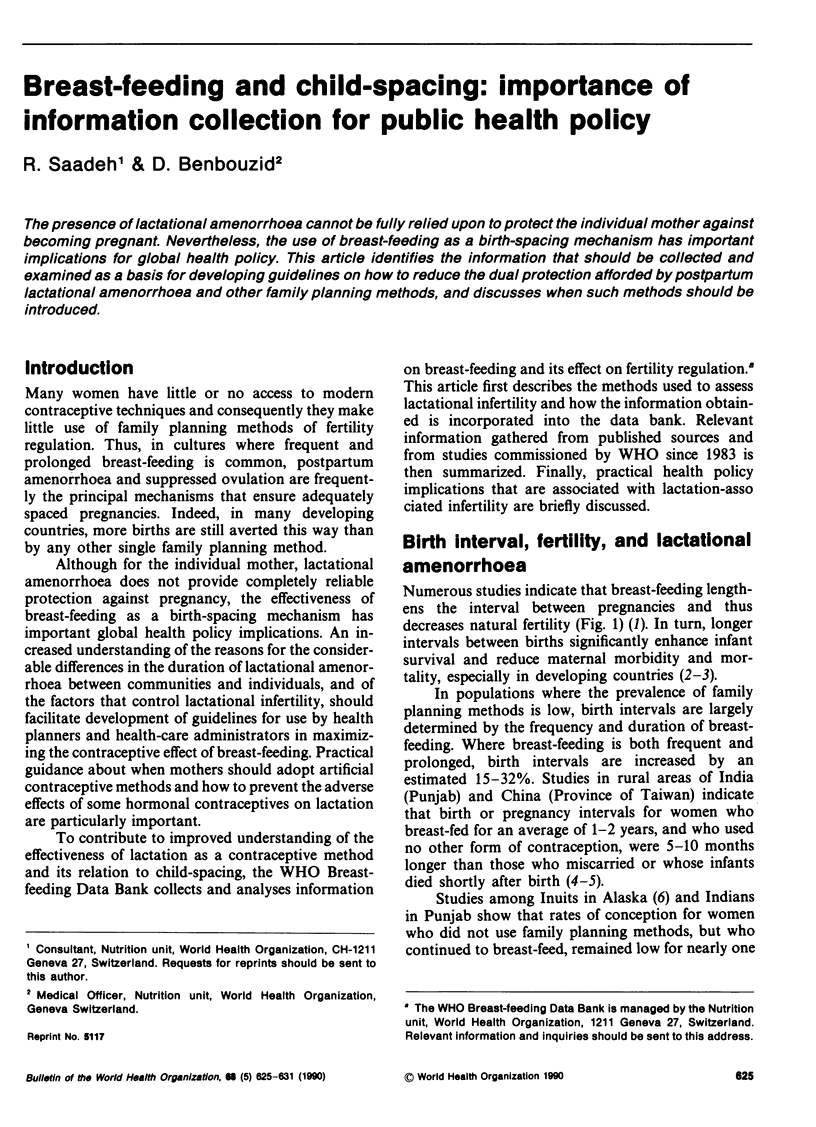
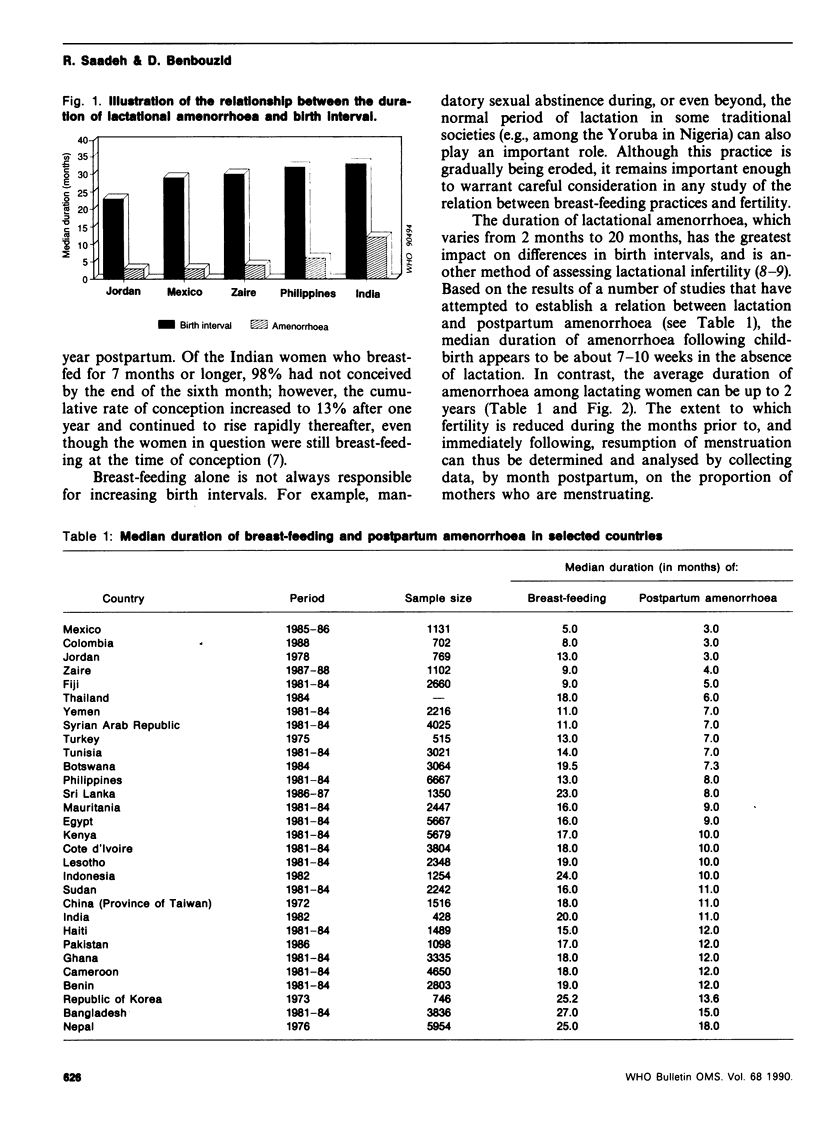

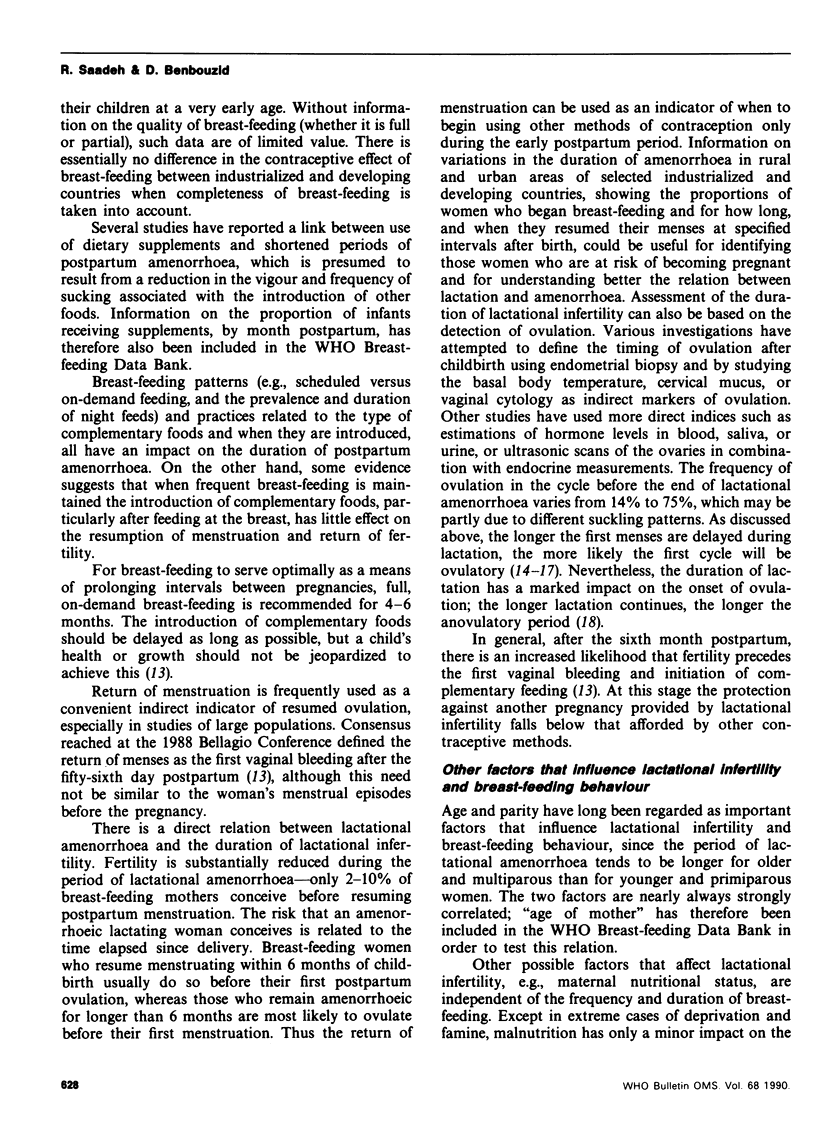
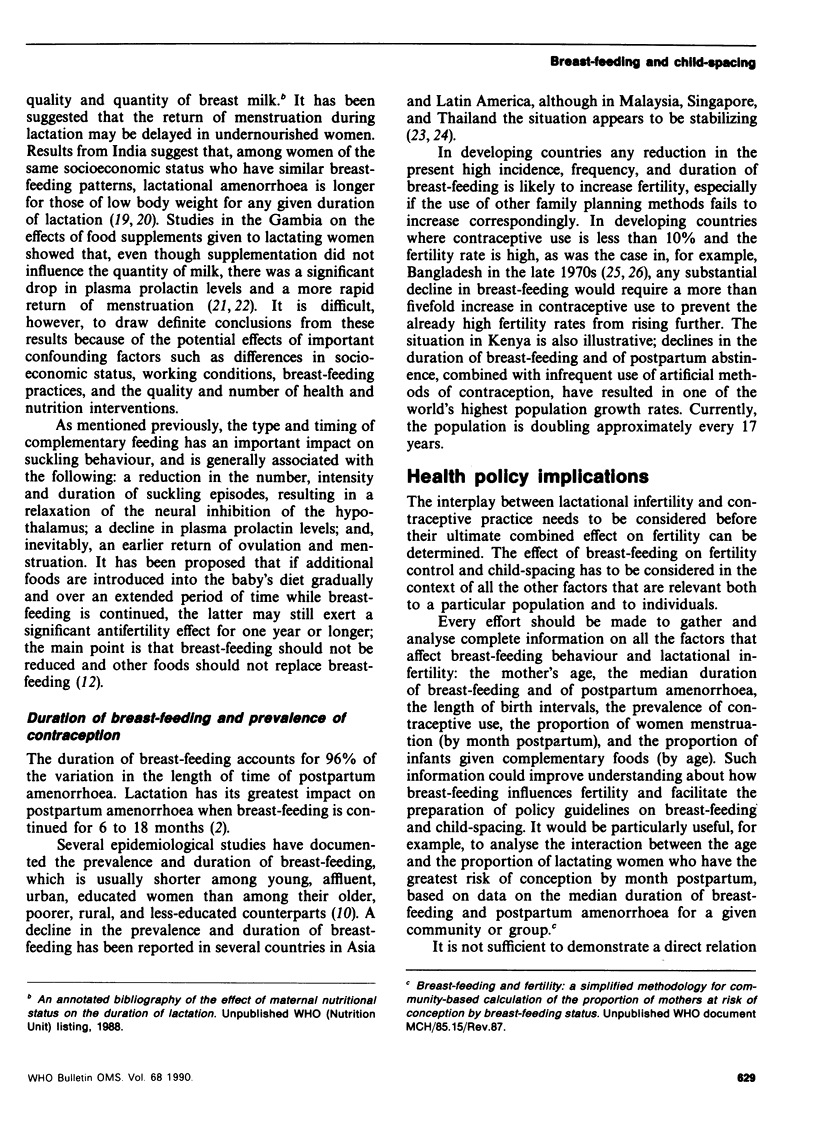
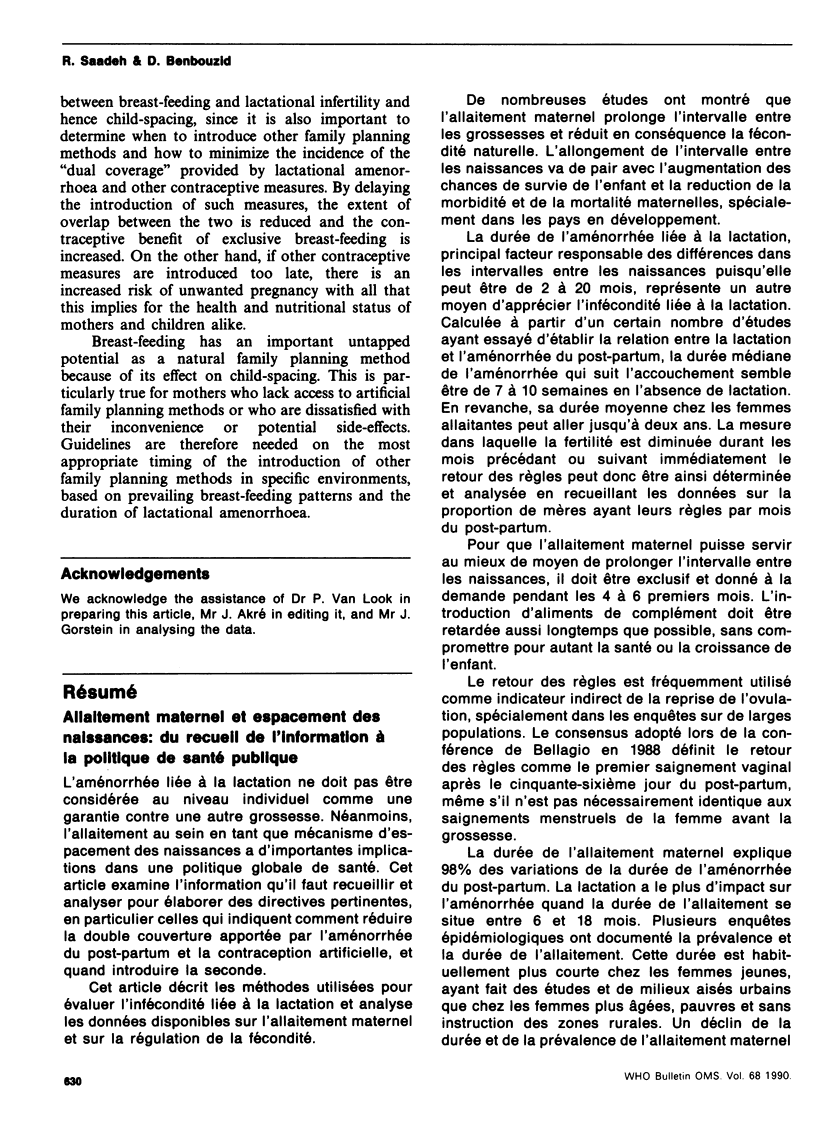
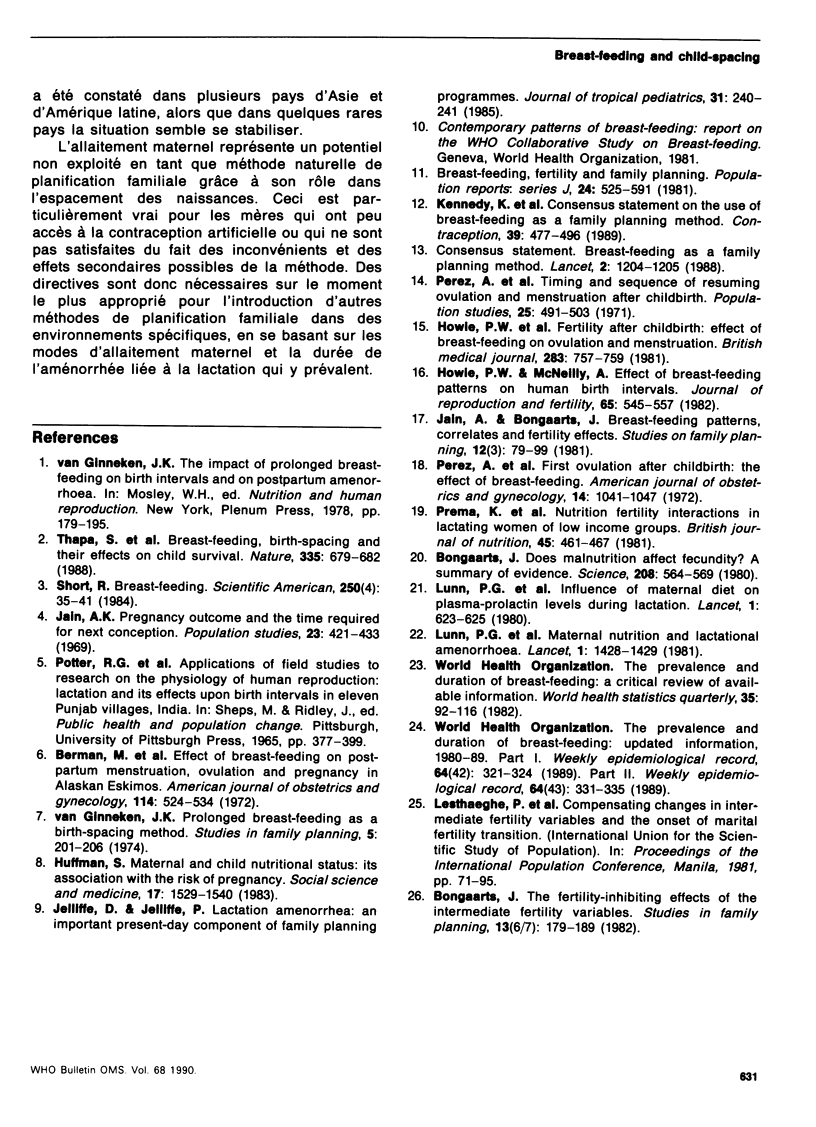
Selected References
These references are in PubMed. This may not be the complete list of references from this article.
- Berman M. L., Hanson K., Hellman I. L. Effect of breast-feeding on postpartum menstruation, ovulation, and pregnancy in Alaskan Eskimos. Am J Obstet Gynecol. 1972 Oct 15;114(4):524–534. doi: 10.1016/0002-9378(72)90215-3. [DOI] [PubMed] [Google Scholar]
- Bongaarts J. Does malnutrition affect fecundity? A summary of evidence. Science. 1980 May 9;208(4444):564–569. doi: 10.1126/science.7367878. [DOI] [PubMed] [Google Scholar]
- Bongaarts J. The fertility-inhibiting effects of the intermediate fertility variables. Stud Fam Plann. 1982 Jun-Jul;13(6-7):179–189. [PubMed] [Google Scholar]
- Huffman S. L. Maternal and child nutritional status: its association with the risk of pregnancy. Soc Sci Med. 1983;17(20):1529–1540. doi: 10.1016/0277-9536(83)90097-7. [DOI] [PubMed] [Google Scholar]
- Jain A. K., Bongaarts J. Breastfeeding: patterns, correlates, and fertility effects. Stud Fam Plann. 1981 Mar;12(3):79–99. [PubMed] [Google Scholar]
- Jelliffe D. B., Jelliffe E. F. Lactation amenorrhoea: an important present-day component of family planning programmes. J Trop Pediatr. 1985 Oct;31(5):240–241. doi: 10.1093/tropej/31.5.240. [DOI] [PubMed] [Google Scholar]
- Kennedy K. I., Rivera R., McNeilly A. S. Consensus statement on the use of breastfeeding as a family planning method. Contraception. 1989 May;39(5):477–496. doi: 10.1016/0010-7824(89)90103-0. [DOI] [PubMed] [Google Scholar]
- Lunn P. G., Prentice A. M., Austin S., Whitehead R. G. Influence of maternal diet on plasma-prolactin levels during lactation. Lancet. 1980 Mar 22;1(8169):623–625. doi: 10.1016/s0140-6736(80)91119-8. [DOI] [PubMed] [Google Scholar]
- Lunn P., Watkinson M., Prentice A. M., Morrell P., Austin S., Whitehead R. G. Maternal nutrition and lactational amenorrhoea. Lancet. 1981 Jun 27;1(8235):1428–1429. doi: 10.1016/s0140-6736(81)92613-1. [DOI] [PubMed] [Google Scholar]
- Prema K., Naidu A. N., Neelakumari S., Ramalakshmi B. A. Nutrition--fertility interaction in lactating women of low income groups. Br J Nutr. 1981 May;45(3):461–467. doi: 10.1079/bjn19810124. [DOI] [PubMed] [Google Scholar]
- Short R. V. Breast feeding. Sci Am. 1984 Apr;250(4):35–41. doi: 10.1038/scientificamerican0484-35. [DOI] [PubMed] [Google Scholar]
- Thapa S., Short R. V., Potts M. Breast feeding, birth spacing and their effects on child survival. Nature. 1988 Oct 20;335(6192):679–682. doi: 10.1038/335679a0. [DOI] [PubMed] [Google Scholar]


